Due to the special process of the sulfuric acid pump installed in the chemical enterprise, the medium is highly corrosive. During the use process, the shaft and the impeller key are corroded and broken for many times. Safe operation and increased maintenance workload and risk. The operating medium of this pump is 68% H2SO4 + 3% HNO3 + 0.38% nitrobenzene + 29.9% H2O, which is extremely corrosive.
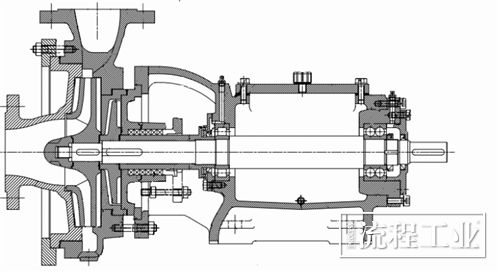
Figure 1 Sectional view of the hydraulic end of the first-stage sulfuric acid pump
There are 4 cantilever centrifugal pumps in the production equipment. The 2 pumps of the first-stage installation are sealed with packing, and a secondary impeller is set behind the main impeller to prevent medium leakage (as shown in Figure 1). The two pumps in the second phase adopt mechanical seals and cancel the auxiliary impeller.
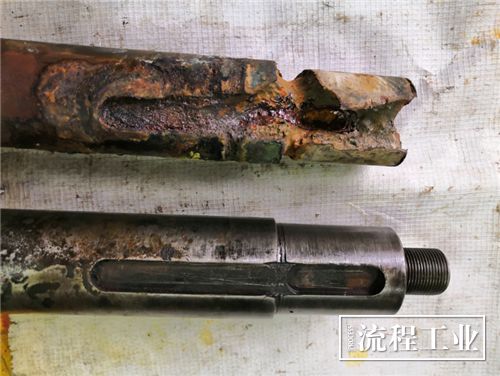
Figure 2 Comparison of damaged shaft and intact shaft
The 3 shaft damages are that the flow pressure of the 1# sulfuric acid pump in the first phase of operation for 10 months dropped to zero, and the impeller locking cap was found to be broken when disassembled; the preventive maintenance of the first phase 2# pump in 12 months found that the pump The impeller locking cap is corroded; after 14 months, the second-stage 1# pump (mechanical seal pump, removed from 1# and installed to the 2# position after removing the mechanical seal), the flow pressure dropped to zero, and the dismantling found that the impeller locking cap was broken .
Figure 2 shows the new pump installed, dismantled after 10 months of failure. From the comparison between the damaged shaft and the intact shaft in Figure 2, it can be seen that the shaft is broken at the locking cap of the impeller, and the keyway is corroded. The other two dismantlings were similar.
Damage Cause Analysis
From the dismantling point of view, it is the medium that corrodes the shaft, which eventually breaks the thread of the shaft head. Now let's analyze each factor in detail.
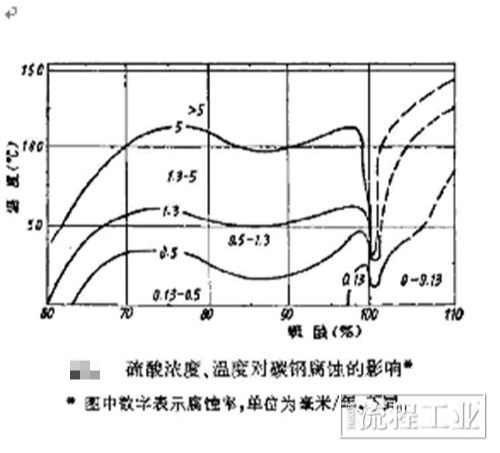
Fig.3 Effect of sulfuric acid on carbon steel corrosion
Media Analysis
Sulfuric acid is an important industrial raw material and one of the most corrosive media. Like all strong acids, there are a lot of hydrogen ions in the acid solution, and it is an effective cathodic depolarizer. The electrode potential of most industrial metals and alloys is lower than that of the hydrogen electrode, and they dissolve rapidly when they encounter sulfuric acid solutions. However, the corrosiveness of dilute sulfuric acid and concentrated sulfuric acid is very different. Dilute sulfuric acid is generally only acidic, while concentrated sulfuric acid is not only acidic, but also a strong oxidant. Therefore, concentrated sulfuric acid not only has hydrogen depolarization, but also oxygen depolarization. This causes some metals and alloys that are not resistant to dilute sulfuric acid but are easy to passivate to produce a protective film in concentrated sulfuric acid, so they have the ability to resist concentrated sulfuric acid. Once the sulfuric acid is diluted below 68%, carbon steel and cast iron equipment will suffer severe corrosion.
In addition, in sulfuric acid solution, the increase of temperature and flow rate will increase the corrosion of dilute and concentrated acid. The passive film formed in concentrated sulfuric acid will be destroyed at high temperature and high flow rate. From Figure 4, it can be concluded that the static corrosion rate of 70% sulfuric acid solution to carbon steel material is 0.5 mm/a at 30 °C, but it reaches 5 mm/a at 100 °C. The operating medium of the sulfuric acid pump used is 68% sulfuric acid at a temperature of 100 °C, which is in a flowing state and is extremely corrosive. There has been an accident that the 20# carbon steel wire plug was mistakenly installed and used as 20# alloy steel, and the accident occurred after 2 days of operation.
Nitric acid is a strong oxidizing acid and is a colorless and transparent liquid. When the concentration reaches more than 68%, it is easy to volatilize and form acid mist. Generally, we refer to nitric acid with a concentration of less than 32% (6 mol/L) as dilute nitric acid. Relevant data show that concentrated nitric acid can passivate iron at room temperature. When the nitric acid is more dilute, it shows strong acidity, and even very dilute nitric acid can chemically react with iron. The 3.073% (0.495 mol/L) concentration of nitric acid is very dilute nitric acid, which may corrode carbon steel materials.
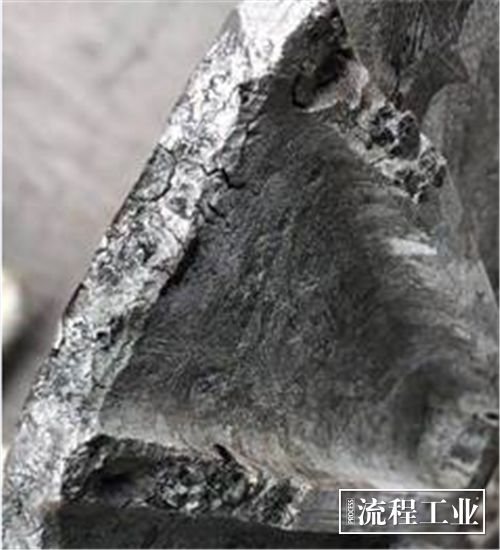
Figure 4 The corroded auxiliary impeller
Analysis of metal materials in circulation parts
The impeller, auxiliary impeller and other parts in contact with the medium are made of cast R30.20, which has good corrosion resistance, but its corrosion resistance is general in terms of use. Figure 4 shows the corrosion condition of the auxiliary impeller after 10 months of operation. From the dismantled pump casing, there are honeycomb corrosion pits. On this device, the pump cover plate qualified for PT has experienced acid leakage many times after being used for a period of time.
The shaft and key material are 45# steel, which is a commonly used medium carbon steel, with high strength and good machinability. The parts after quenching and tempering treatment have good comprehensive mechanical properties and are widely used in various important structural parts. , Usually used for connecting rods, bolts, gears and shafts, but the disadvantage is that the surface hardness is low and not wear-resistant. The carbon steel is quenched and tempered + surface quenched to improve the surface hardness of the parts. The research data in Figure 3 shows that carbon steel cannot be used in sulfuric acid of less than 65% at any temperature. At the same time, when the temperature is above 65 ℃, no matter how high the concentration of sulfuric acid is, carbon steel generally cannot be used.
Comprehensive Analysis
In the analysis of the material combined with the medium and the parts in circulation, the medium in which the sulfuric acid pump operates is highly corrosive, and the 45# steel shaft, which is the shaft material selected for the sulfuric acid pump, is not resistant to medium corrosion. Causes the acid medium to penetrate into and corrode the key and the shaft, so that the key transmission fails or the shaft head thread is broken.
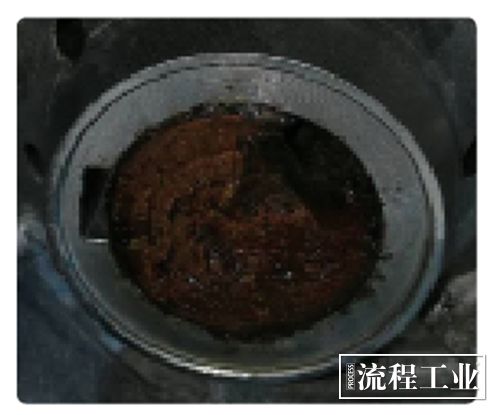
Figure 5 The seal width of the impeller keyway
Improvement countermeasures, anti-corrosion performance improvement
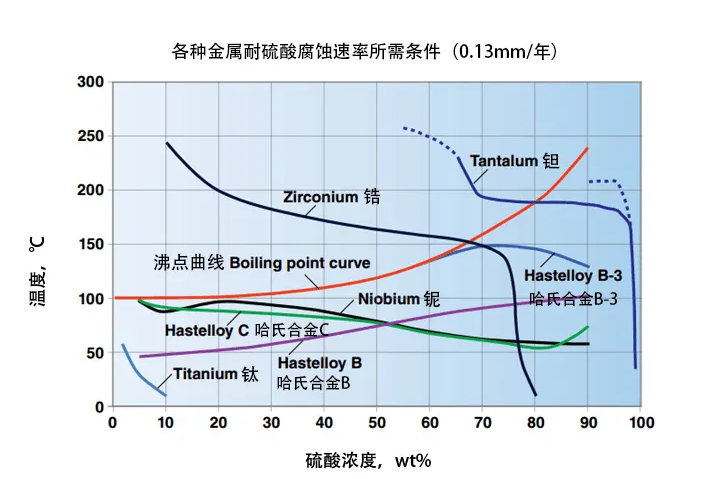
Figure 6 Comparison of metal sulfuric acid resistance
Tantalum is the most corrosion-resistant metal available today, and it is inert to almost all organic and inorganic compounds. Its corrosion resistance is very similar to glass in that neither is suitable for hydrofluoric acid and hot alkali applications. Therefore, tantalum is commonly used with glass-lined steel reactors as patches, dip tubes, pipes, and overhead condensers.
Tantalum is inert to sulfuric and hydrochloric acid at all concentrations below 300°F. Temperatures up to 400°F have little effect, while tantalum is typically used below 500°F. Tantalum is not attacked by nitric acid at concentrations up to 98% and at temperatures of at least 212°F. Tantalum has proven itself to be completely inert in many applications. Some heat exchanger units have been in continuous use in multi-product research environments for over 40 years without gasket replacement.
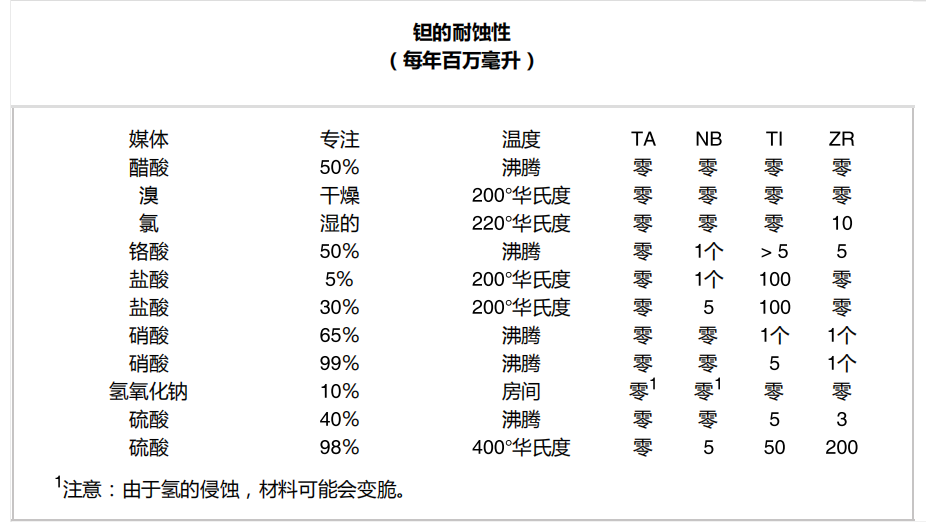
Tantalum is the best choice for sulfuric acid pumps.
Ains (Beijing) Tantalum Application Technology Co., Ltd. has been committed to the development of tantalum surface alloy technology for many years. By making tantalum alloy on the surface of ordinary equipment, it gives the equipment high performance comparable to pure tantalum products. The emergence of this technology perfectly solves the cost of tantalum, making the application of tantalum popular and widespread is no longer a dream.
Our technology can precisely control the thickness of the coating, and the thickness of the workpiece surface can be achieved between 1 and 200 μm, and the α-phase body-centered cubic crystal structure of tantalum with good wear resistance and corrosion resistance and no interface oxide layer can be prepared. The metal deposition layer greatly increases the service life of the material, improves the performance of the material, saves the amount of the material, and also fully utilizes the excellent properties of tantalum.
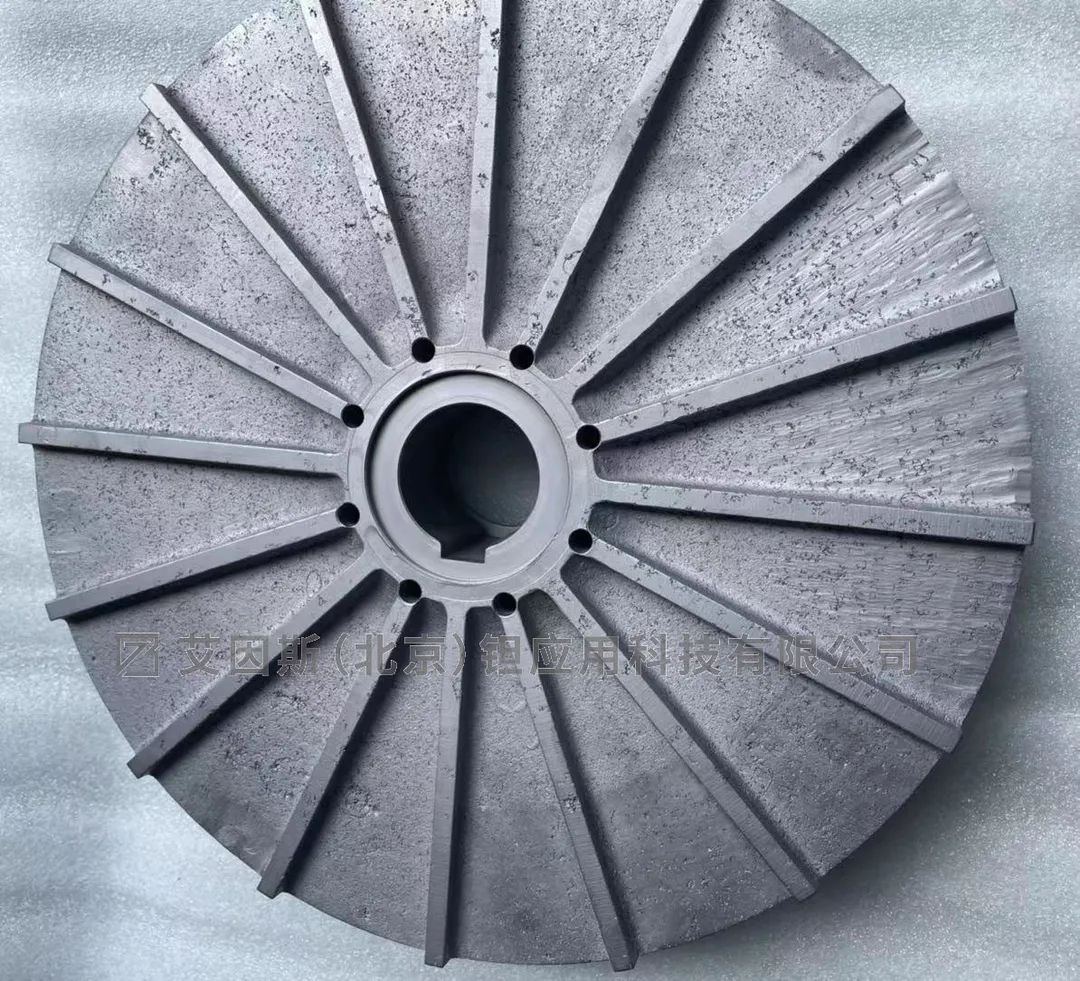
Impeller after deposition of tantalum coating by CVD/CVI technology
Epilogue
Tantalum is the most corrosion-resistant metal available today and is the best choice for a base material for sulfuric acid pumps. However, the price of pure tantalum is too high, and it is not practical to use pure tantalum forging sulfuric acid pumps.
Ains' CVD/CVI tantalum coating deposition technology can perfectly solve the corrosion problem of sulfuric acid pump and the problem of high investment.